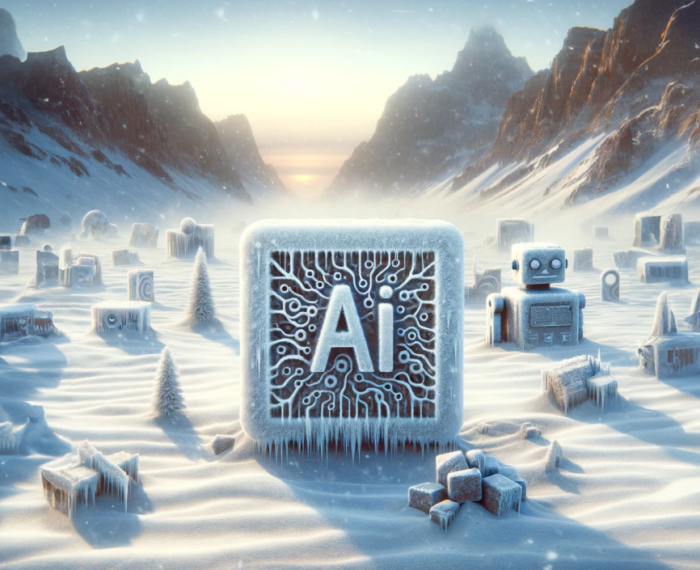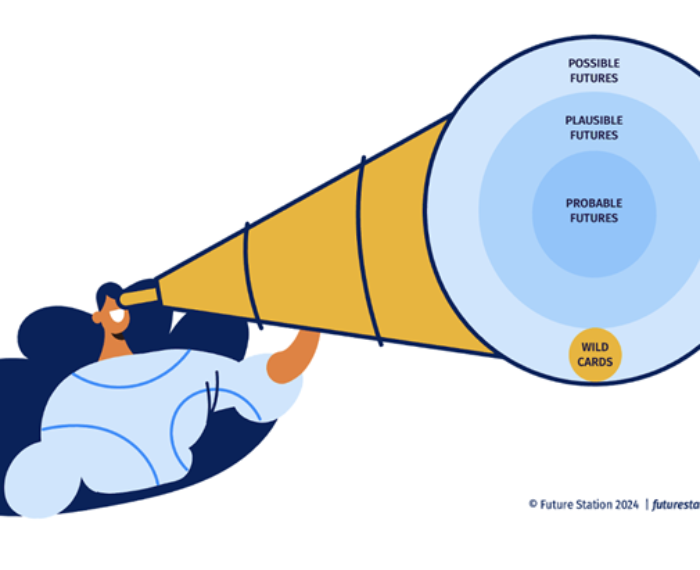How do we imagine the future?
Have you ever wondered how we make sense of the future? Throughout human history, we’ve been captivated by the future – from ancient oracles to foresight specialists, our desire to understand what lies ahead seems embedded in human nature. But compared to the ancient oracles, today we know that “the future cannot be predicted because the future does not exist”, as Jim Dator, an American futurologist and Director of the Hawaii Research Center for Futures Studies, beautifully puts it.
This insight highlights that, rather than slipping into fatalism, we should embrace the idea that there isn’t just one future but many potential futures waiting to unfold.
Today, let’s explore one of the most fascinating tools we use to think about these multiple futures: the Futures Cone.
The Futures Cone
To better understand the idea of multiple futures, visual aids were produced. One is the Futures Cone, a pretty “famous” foresight tool. Among the early contributors to the futures cone concept, it’s worthwhile mentioning Hancock and Bezold, who popularized the model in 1994, as well as Henchey, who laid foundational ideas in 1978 by categorizing futures into four main types: possible, plausible, probable, and preferable. Its shape expands as it moves further into the future, illustrating that the range of possibilities increases as we look further ahead (from the inside circle to the outer circle).

When you look up at a cloudy sky, you might say, “It’s probably going to rain,” or “It is possibly going to rain,” or “It is plausible going to rain.” In everyday life, these statements often mean the same thing: you’ll take an umbrella just in case!
But in futures studies, we look at things differently. Here, ‘probable’, ‘possible’, and ‘plausible’ aren’t different ways of saying the same thing. They each have their own special meaning when we’re thinking about the future.
Possible Futures: The world of “What if?”
Possible futures include anything that could theoretically happen, no matter how unlikely. These futures encourage us to ask “What if?” and consider events that may seem “far away” today but could disrupt tomorrow. Here we could also talk about black swans, wild cards, or low-probability, high-impact events. An example of wildcards could be a cyber war or a fungi pandemic. They have the potential to disrupt our understanding of “future reality” and challenge the very essence of who we are, including our hopes, fears, and expectations. Because wildcards can happen suddenly and unexpectedly, we may not always have time to prepare. Exploring this kind of futures encourage us to think beyond our usual boundaries and consider possibilities that we might otherwise overlook.
Plausible Futures: The world of “could be”
Plausible futures occupy the space between possible and probable. They are scenarios that “could” happen based on current knowledge, trends, and systems. For example, a plausible future in education could be a decentralized system with a mix of online resources, AI tutors, and local learning hubs creating a personalized education system beyond traditional schools. Or imagine a future where personalized medicine is widely accessible, with treatments and drugs tailored to an individual’s unique genetic profile, lifestyle, and environmental factors.
Probable Futures: The official futures
These are the futures we can most clearly see from where we stand today. They extend the current trends into the near future, such as increased adoption of renewable energy sources, more flexible work arrangements becoming standard, or greater integration of AI in healthcare diagnostics.
For us as humans, it’s easier to envision the future in terms of “official” or probable futures, as our brains naturally seek familiarity and relevance, making it harder to imagine other, less certain outcomes.
But remember, the future is about possibilities, not (only) probabilities. While probabilities are valuable for making informed decisions, they can sometimes limit our vision and reinforce only the futures we find most comfortable. When we talk about possibilities, we’re opening the door to a wide range of potential futures, including those that may seem unlikely or far-fetched. Therefore, this perspective encourages creative thinking and innovation. In contrast, probabilities focus on outcomes that are more likely based on existing information and trends.
The next time you find yourself thinking about the future, consider where your thoughts fall on the Futures Cone. Are you thinking about the probable, the plausible, or the possible? Are you prepared for the wild cards that might appear? By understanding these distinctions, we can all become better navigators of the future that awaits us.

